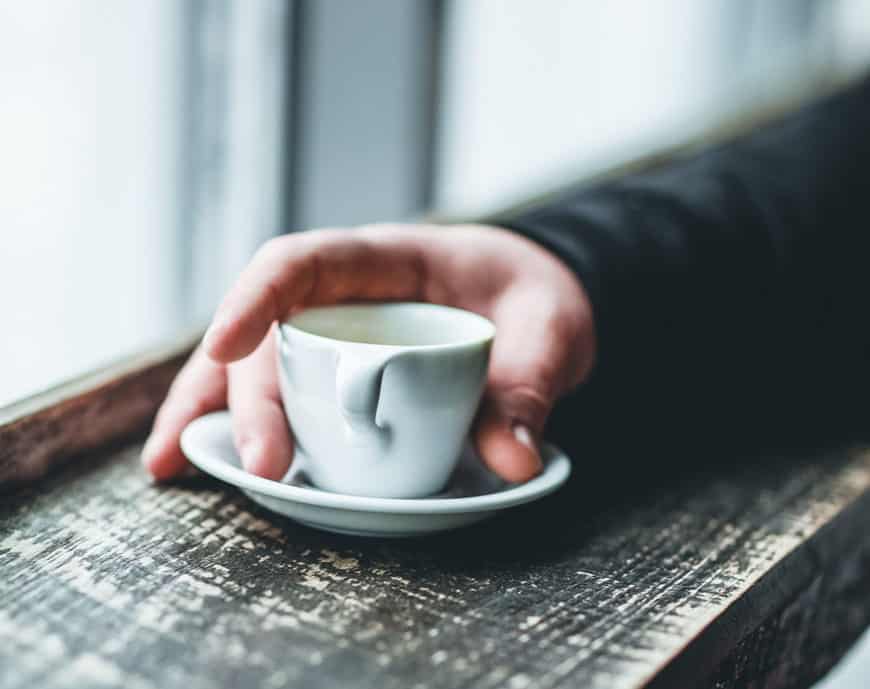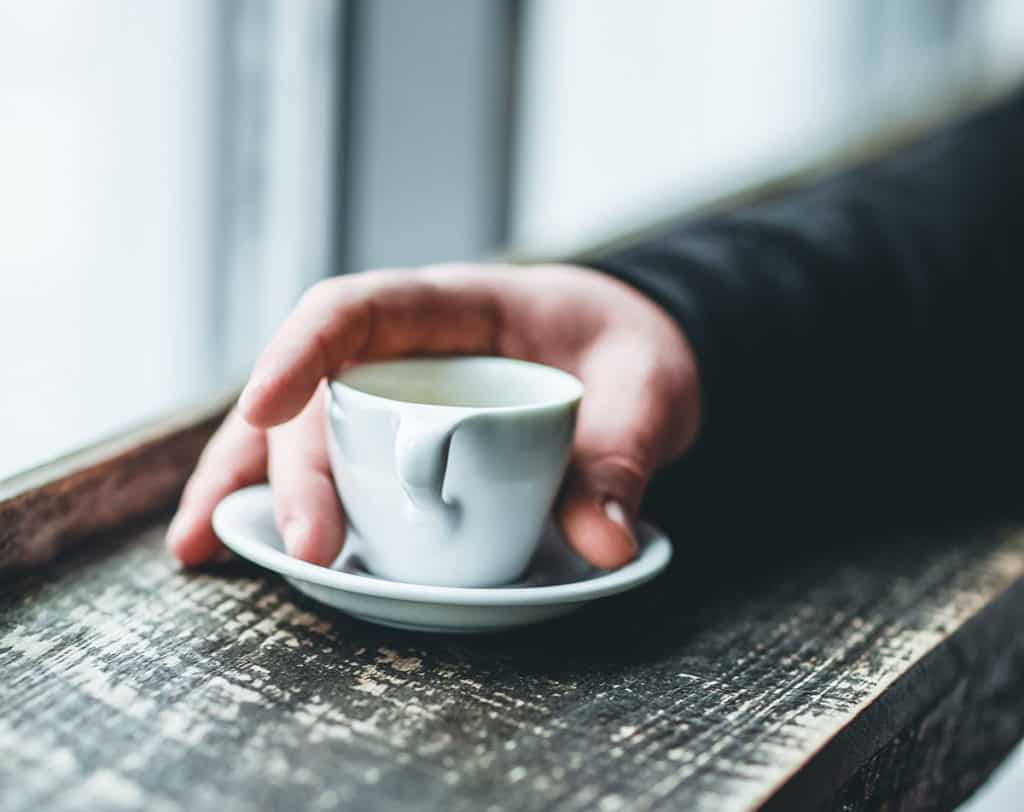
Two of the most common and popular espresso drinks are the ristretto and the lungo. The amount of water in these different espresso coffees is the main ingredient that sets ristrettos and lungos apart from each other.
However, ordering just an espresso can also cause confusion among the less coffee-savvy types of customer. I know, when I was younger and before I got into the coffee business, I was also confused about the differences between an espresso, a lungo and a ristretto.
What is the difference between a espresso, lungo and ristretto? The main difference is that espresso is way of making coffee, whereas a lungo is an espresso that uses more water then usual and a ristretto is an espresso that uses less water than usual to make an espresso
In this article I hope to better explain the differences between an espresso, a lungo and a ristretto so you can make a more informed choice when going to your favorite coffee shop or if you want to make them at home!
What Makes a Espresso an Espresso?
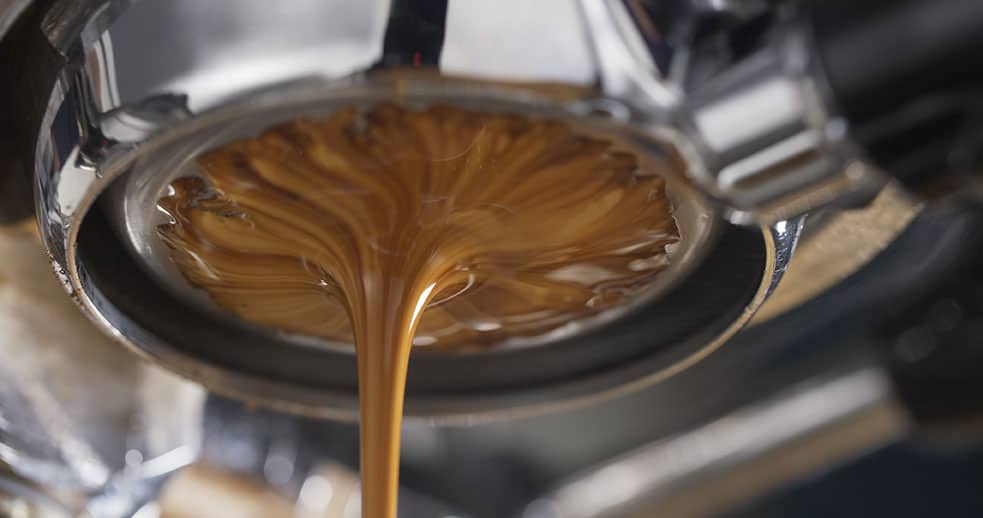
Espresso is actually a brewing method and not a type of coffee but its used commonly as an umbrella term that encapsulates different types of coffee made using a this method.
Espresso is the shot that generally comes in tiny cups, packed with a high-dose of caffeine. The beans that go in an espresso are not unlike the coffee beans that are used in drip machines in households.
In generic terms, espresso is made using a small amount of water that is blasted through a tightly-compressed, finely ground and tamped bed of coffee, at extremely high temperatures.
The ratio of water to coffee is dependent on the type of espresso machine used. No matter the type of espresso machine, and its ratios, the end-result is generally the same.
The traditional Italian/American espresso recipe comprises of 8 grams of well-ground coffee per 30ml of water. Of course, this is sometimes dictated by the programming of the espresso machine, so take these values as merely a guideline.
What it ends up producing is a highly concentrated, potent dose of coffee that brings out qualities of coffee that other brewing methods fail to achieve. Not forgetting, the espresso method of coffee-making produces a mouth-watering, aesthetically-pleasing crema surface.
What makes a Ristretto Coffee?
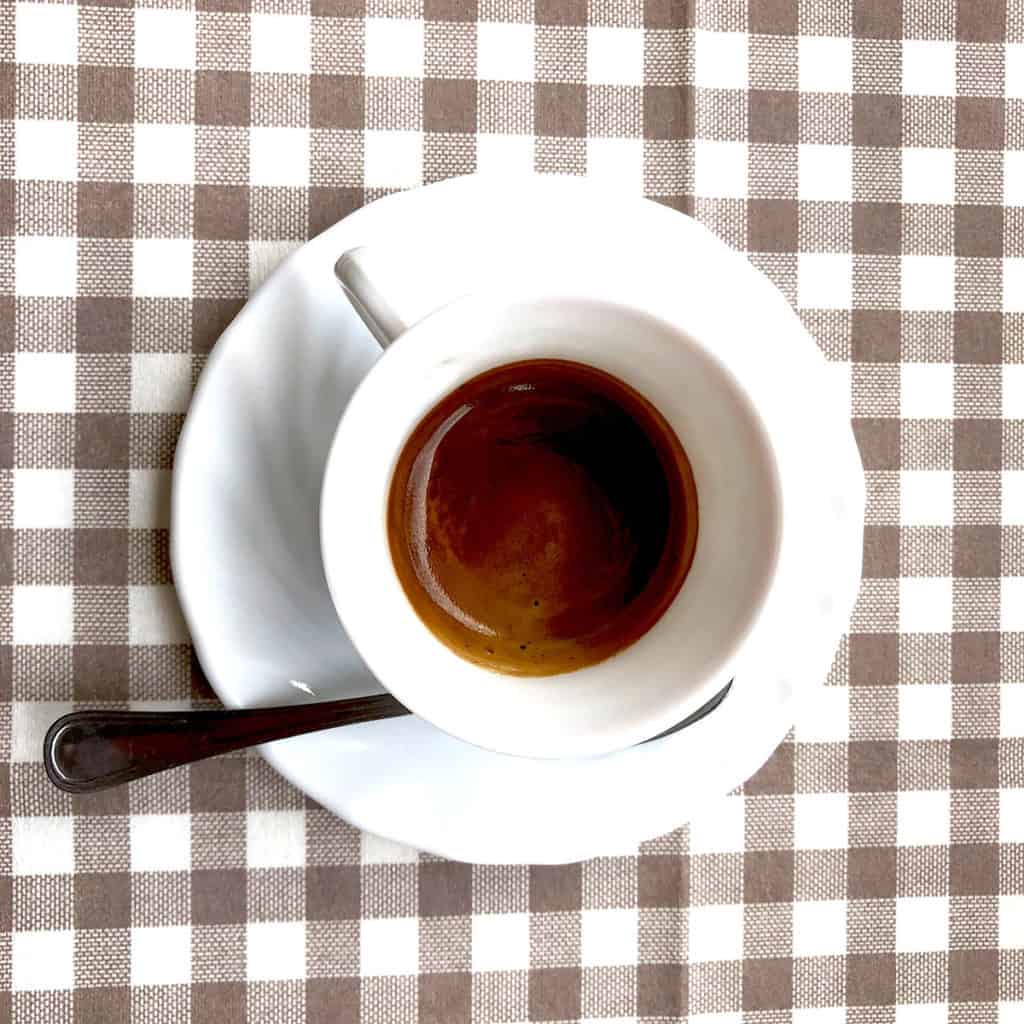
Basically, a ristretto is a variant of the standard espresso method. The difference being that a ristretto coffee is produced by limiting the water supply by approximately half, compared with an espresso shot.
Limiting the water supply ensures the bed of ground coffee isn’t overly saturated with water, resulting in a lower caffeine content.
Of course, those feeling overly sluggish or tired may find this lack of caffeine not what they are looking fo, and end up opting for something that offers more of a caffeine-kick.
This type of method also produces a coffee that is filled with heightened aromatic flavors, as a result of the short extraction period. The ristretto process concerns itself more with achieving aromatic tones than producing a high-caffeinated coffee.
As mentioned, far less water reaches the coffee bed, but the water infiltration process is much quicker compared with other methods, leaving more of the floral, heightened undertones of the coffee untouched.
So if you are using coffee say from Ethiopia or Kenya those floral/citrus notes are going to be really strong tasting (in a good sense)
Ristretto shots are less popular than the likes of an espresso, due to the smaller measure of coffee produced and lower caffeine content. However, if you don’t need that extra kick and are just looking for some strong flavors to taste then a ristretto coffee may be right for you.
The traditional recipe for an American ristretto shot is touted as 8 grams of coffee per 15ml of water. This should produce approximately 12ml of drinkable coffee.
What makes a Lungo Coffee?
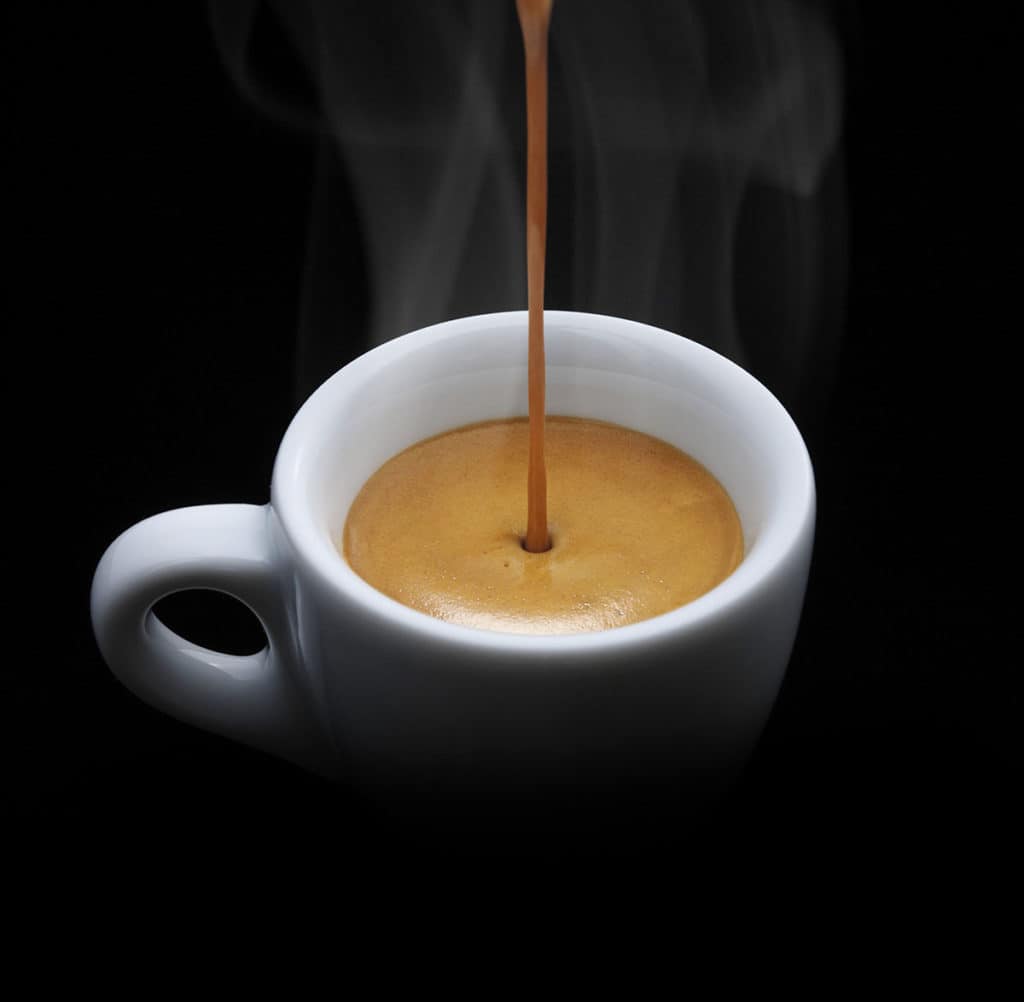
An espresso machine, like the ristretto, is used to produce a lungo coffee. Once again, it is dependent on the quantity of water that filters through the coffee bed. For a lungo coffee, is basically doubling the amount of water – compared with a normal espresso and you get your lungo .
As a result of using double the amount of water the caffeine content will be lowered even further than that of the espresso and ristretto varieties.
However, this method will produce even more pronounced aromatic flavors. Not only that, but the majority, possibly all, of the heightened, bitter notes of the coffee will be completely diluted due to the longer extraction process.
Like ristretto, lungo is a sometimes completely overlooked choice on the coffee menu for many avid coffee shop-goers. If you are seeking to lower your caffeine intake or stay clear of overly strong flavor then a lungo may be for you.
The traditional recipe for producing a lungo is 8 grams of coffee per 55ml of water. This should produce around 50ml of drinkable coffee.
The Difference in Coffee Flavors
As outlined above, espresso, ristretto and lungo are variants of the same fundamental technique of producing coffee through the espresso process. These three types of coffee are most easily differentiated between in terms of flavor and caffeine content.
Espresso Flavors
The key to getting good flavors from your espresso, is to use fresh roasted coffee, with high quality and well roasted (not burnt) coffee from, preferably, a local coffee roaster.
If you use a coffee from Brazil or a Brazil based blend, which is a commonly coffee used for alot of coffee shops in the USA at least, then your espresso will have a nutty, dark, earthy tones. If you go the opposite direction and say get a coffee from Kenya you will get strong floral notes.
Another tell-tale sign of high quality espresso that is using fresh roasted coffee is the presence of the crema (the frothy layer on the surface).
The crema helps to give the espresso a smooth and more body feel quality. Of course, these common characteristics are not always set in stone, with espresso shots having the capacity to offer flavors from earthy (think Sumatra) to Citric tones (think Ethiopia), when prepared using coffee from different parts of the world.
Ristretto Flavors
The basic espresso method produces powerful earth-like notes due to the extraction time and highly pressurized process. Ristretto coffee is born out of a high pressure system, but the limited amount of water used leads to a short, and less stringent, extraction process.
In a ristretto the crema is comparatively thinner than that of an espresso, leading to decreased chocolate flavors and minimal earth-like notes . The earthy, chocolate flavors are, instead, replaced by aromatic and floral notes.
You will experience pungent herbal notes, coupled with flowery, fruity notes. This is particularly the case if you smell a ristretto. When actually drinking a ristretto you will have more or less the same sensory experience but with the herbal/flower undertones coming to the fore slightly more.
Lungo Flavors
The flavors found in a lungo are akin to roasted, smoke-like tones. It’s kind of a one-dimensional type of coffee in terms of flavor, as no other undertones are found except the aforementioned two: roasted and smokey.
The extraction process really pushes the limits, where you might feel like your lungo has been burnt due to the overly strong notes created. However, don’t let that put you off from ordering a lungo – many people end up enjoying its more “mature” taste over other, more paltry, varieties.
On its own or with a little something extra
You may be wondering whether it’s worth mixing your espresso, ristretto or lungo with anything. This essentially boils down to personal taste. Are you a coffee purist or more of a liberal coffee drinker? The coffee purists would argue that adding milk, cream or sugar is sacrilege, and much prefer to savor the actual taste of the coffee, unadorned.
Different Ways of Brewing Espresso
For the most part, the conventional espresso process may be sufficient to satisfy your taste buds. However, if you wish to experiment and come to grips with the subtleties of certain types of bean, it would behoove you to learn about the different types of combination of coffee.
The following is a list of some popular combinations you can try:
- Pour in a lungo shot when making an americano (for the caffeine addict)
- Pour in a ristretto shot in a mocha to give it floral notes. To make it extra special you could also pour in some lavender syrup.
- Pour a lungo shot into “shot in the dark” style drinks to increase caffeine content and add powerful roasted tones.
- Pour a ristretto shot into “shot in the dark” style drinks to create a coffee that features contrasting undertones – providing a overload of flavors that describe the entire flavor profile of the bean.\
For more information on different coffee drinks see my post on the subject
Final Thoughts: Which type of Espresso is best?
In the war of espresso type coffees: lungo, espresso and ristretto, which one wins is all down to personal preference. If you’re after a smooth, easy-drinking type of coffee then a ristretto may be your best bet.
A ristretto allows you to experience the heightened sweetness and power in a more concentrated form. In comparison, an espresso may be the preferable option for people seeking a more bitter cup of coffee, coupled with a far more complex array of flavours.
A lungo, on the other hand, may appeal to people who enjoy more pronounced aromatic flavors with less of a bitter aftertaste. All in all, finding the coffee you like best may come down to trial and error, before finally settling for your go-to morning beverage to tide you through your busy day.

